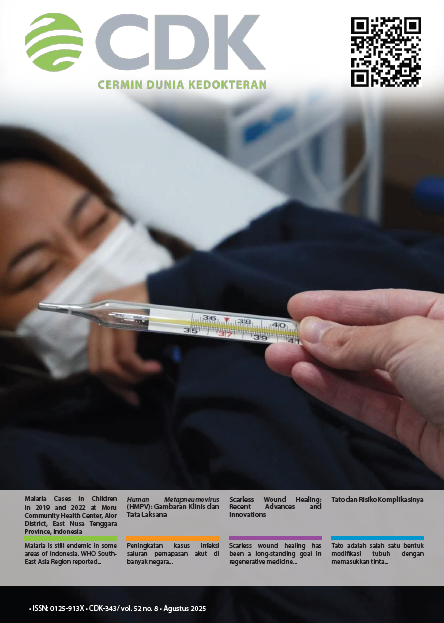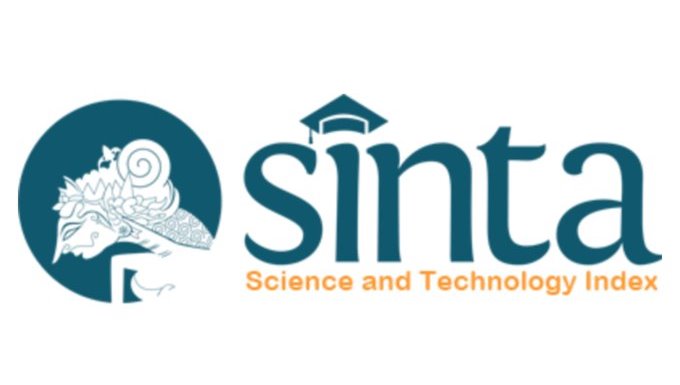Percutaneous Dilatation Tracheostomy with Real-Time Ultrasonography Guidance in a Critically III Patient
Case Report
DOI:
https://doi.org/10.55175/cdk.v52i8.1392Keywords:
Mechanical ventilation, percutaneous dilatation tracheostomy (PDT), tracheostomyAbstract
Introduction: Tracheostomy is a common procedure in intensive care units for critically ill patients with mechanical ventilation. Case: This case report describes the use of real-time ultrasonography (USG) guidance for percutaneous dilatational tracheostomy (PDT) in a 63-year-old female with prolonged mechanical ventilation following craniotomy. The patient had relative contraindications including short neck and morbid obesity (BMI 40.8). On day 7 of ICU admission, a PDT was successfully performed using real-time ultrasonography (USG) guidance. USG was utilized to identify key anatomical landmarks, such as tracheal rings and vascular structures, ensuring safe and accurate needle placement. The use of real-time USG significantly reduced the risk of complications including hemorrhage, tracheal injury, or pneumothorax. The procedure was completed without incident, and the patient showed clinical improvement post-intervention, including enhanced respiratory function and gradual weaning from mechanical ventilation. Conclusion: This report highlights the safety and efficacy of USG-guided PDT, especially in high-risk patients with difficult neck anatomy. It also underlines the importance of ultrasound as a widely available and cost-effective tool in ICU settings. The case supports further implementation of real-time USG-guided techniques in percutaneous tracheostomy to improve procedural success and patient outcomes. Further research involving a larger cohort is needed to establish standardized protocols and evaluate long-term outcomes of this approach.
Downloads
References
Mehta C, Mehta Y. Percutaneous tracheostomy. Ann Card Anaesth. 2017;20(Suppl):S19–25. doi: 10.4103/0971-9784.197793.
Zouk AN, Batra H. Managing complications of percutaneous tracheostomy and gastrostomy. J Thorac Dis. 2021;13(8):5314–30. doi: 10.21037/jtd-19-3716.
Gualtieri G, Imperatore F, Cafora C, Liguori G, Gritti F, Tolone S, et al. Ultrasound guided percutaneous dilatation tracheotomy (US-PDT) to prevent potentially life-threatening complications: A case report. Int J Surg Case Rep. 2020;77S:S125–8. doi: 10.1016/j.ijscr.2020.09.031.
Siagian N, Bramantono B, Hadi U. Tuberculous lymphadenitis coexists with non-hodgkin lymphoma. Curr Intern Med Res Pract Surabaya J. 2020;1(2):52. doi: http://dx.doi.org/10.20473/cimrj.v1i2.21458.
Pilarczyk K, Haake N, Dudasova M, Huschens B, Wendt D, Demircioglu E, et al. Risk factors for bleeding complications after percutaneous dilatational tracheostomy: a ten-year institutional analysis. Anaesth Intensive Care. 2016;44(2):227–36. doi: 10.1177/0310057X1604400209.
Kang HT, Kim SY, Lee MK, Lee SW, Baek A, Park KN. Comparison between real-time ultrasound-guided percutaneous tracheostomy and surgical tracheostomy in critically ill patients. Crit Care Res Pract. 2022;2022:1388225. doi: 10.1155/2022/1388225.
Mayo PH, Copetti R, Feller-Kopman D, Mathis G, Maury E, Mongodi S, et al. Thoracic ultrasonography: a narrative review. Intensive Care Med. 2019;45(9):1200–11. doi: 10.1007/s00134-019-05725-8.
Park J, Chung W, Song S, Kim YH, Lim CS, Ko Y, et al. Identifying the ideal tracheostomy site based on patient characteristics during percutaneous dilatational tracheostomy without bronchoscopy. Korean J Anesthesiol. 2019;72(3):233–7. doi: 10.4097/kja.d.18.00276.
Khaja M, Haider A, Alapati A, Qureshi ZA, Yapor L. Percutaneous tracheostomy: a bedside procedure. Cureus. 2022;14(4):e24083. doi: 10.7759/cureus.24083.
Sasane SP, Telang MM, Alrais ZF, Alrahma AH, Khatib KI. Percutaneous tracheostomy in patients at high risk of bleeding complications: a retrospective single-center experience. Indian J Crit Care Med. 2020;24(2):90–4. doi: 10.5005/jp-journals-10071-23341.
Nadia R, Elvira D, Raveinal. HIV drug resistance mutations. Biosci Med J Biomed Transl Res. 2020;6(7):2006–13. doi:10.37275/bsm.v6i7.547.
Haron A, Li L, Davies EA, Alexander PDG, McGrath BA, Cooper G, et al. Increasing the precision of simulated percutaneous dilatational tracheostomy—a pilot prototype device development study. iScience. 2024;27(3):109098. doi: 10.1016/j.isci.2024.109098.
de Kleijn BJ, Wedman J, Zijlstra JG, Dikkers FG, van der Laan BFAM. Short- and long-term complications of surgical and percutaneous dilatation tracheotomies: a large single-centre retrospective cohort study. Eur Arch Otorhinolaryngol. 2019;276(6):1823–8. doi: 10.1007/s00405-019-05394-9.
Agenor A, Dvoracek L, Leu A, Hunter DA, Newton P, Yan Y, et al. Hyaluronic acid/carboxymethyl cellulose directly applied to transected nerve decreases axonal outgrowth. J Biomed Mater Res B Appl Biomater. 2017;105(3):568–74. doi: 10.1002/jbm.b.33576.
Downloads
Published
How to Cite
Issue
Section
License
Copyright (c) 2025 Fachrizal Rikardi, Bowo Adiyanto

This work is licensed under a Creative Commons Attribution-NonCommercial 4.0 International License.





















